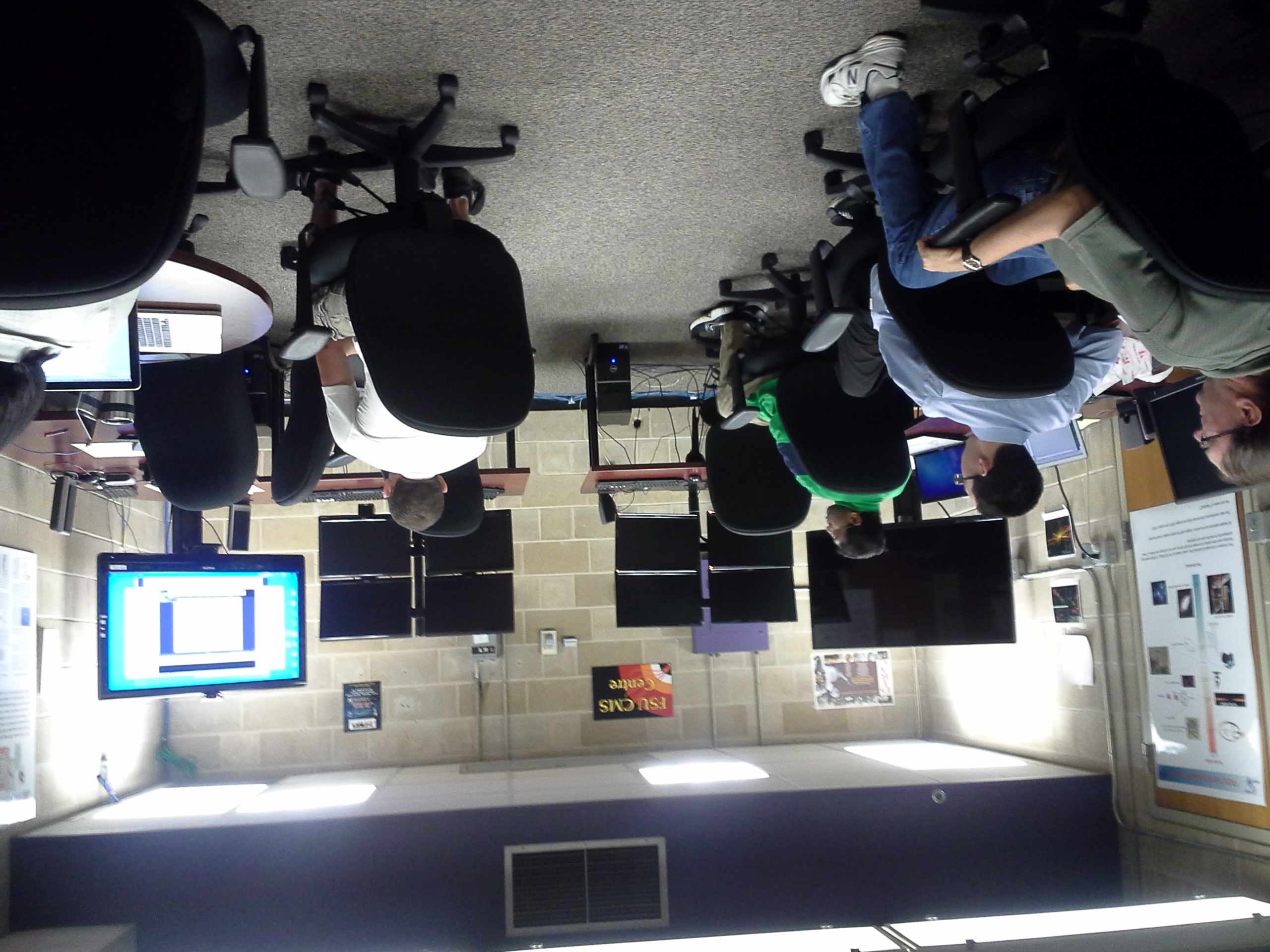
FSU Experimental High Energy Physics
The High Energy Experimental physics group is engaged in the study of the fundamental constituents of matter and the laws by which they interact. Our current experimental program has three major research thrusts: collider physics, neutrino physics, and detector development.
Members of the group include Prof. Todd Adams, Prof. Andrew Askew, Prof. Susan Blessing, Dr. Sharon Hagopian (retired), Prof. Ted Kolberg, Prof. Daniel Pershey, Prof. Harrison Prosper, Prof. Mayly Sanchez, and Prof. Rachel Yohay.
Collider physics program
The FSU high energy physics (HEP) collider physics program is focused on the Compact Muon Solenoid (CMS) experiment, at CERN, the European particle physics laboratory. CERN is home to the world's highest energy particle accelerator, the Large Hadron Collider (LHC).
Related Links
The LHC produces proton-proton collisions with a total energy of 13.6 TeV. Together with colleagues from around the globe, we helped build and commission the CMS detector, which is 22 meters long, has a diameter of 15 meters, weighs 12,000 tons, and operates inside a 3.8 Tesla magnet. We have concentrated our efforts on the hadronic calorimeter (V. Hagopian, S. Hagopian, Kolberg), the electromagnetic calorimeter (Adams, Askew), the silicon tracker (Yohay), and the upgrade of the forward calorimeter (Kolberg, Yohay). In 2012, CMS and our sister experiment Atlas announced the discovery of a new particle that has since been shown to be consistent with the long sought after Higgs boson. In the coming years, we hope to observe new particles or processes predicted by beyond the Standard Model theories. Our current interests are supersymmetry (Askew, Prosper), large extra dimensions (Askew), dark matter (Askew), contact interactions (Prosper), Higgs bosons (Prosper, Yohay), three photon events (Adams), and long-lived particles (Adams, Kolberg).
The HEP group created a local CMS Centre in 2009. The Centre is a focus of our work on CMS from Tallahassee. It is used for CMS analysis, video conferencing, and operations shifts. It gives us a stronger connection to our experiment that is 5000 miles away. It also allows us to show visitors a bit more of the experiment.
More information about the FSU CMS efforts is available here.
Neutrino physics program
Detector development program
We also have laboratory space at FSU that is used for R\&D related CMS detector upgrades, DUNE detector R\&D, and detectors for future experiments. The FSU nuclear accelerator has been used for radiation damage studies and the National Magnetic Field Laboratory has provided four Tesla magnetic fields to test detectors in a similar environment as the CMS solenoid.
Previous D0 program
The FSU experimental HEP group had a long time involvement with the DØ experiment at the Fermi National Accelerator Laboratory (Fermilab), near Chicago. The experiment took data through 2011, recording more than 10 inverse femtobarns. One of our principal research interests was the physics of the top quark, where we have led the initial discovery in 1995 (Prosper), measured the mass in 2004 (Prosper and Wahl), made first observation of single top production in 2007 (Prosper), and made first measurement of production using the very complex lepton+tau final state (Adams). We also have a long history with searches for new phenomena -- such as those arising from supersymmetry (Adams), extra dimensions or the leptoquark hypothesis (Blessing, S. Hagopian) that are not predicted by the Standard Model of particle physics. In addition, we were leaders in studies of Standard Model physics with electroweak measurements [W boson asymmetry (Blessing), diboson production (Askew)] and quantum chromodynamics [double parton interactions (Bandurin), heavy quark plus photons (Bandurin, Wahl)].
For more information on our experiments:
We also have our hands in organizing conferences, physics schools,..:

